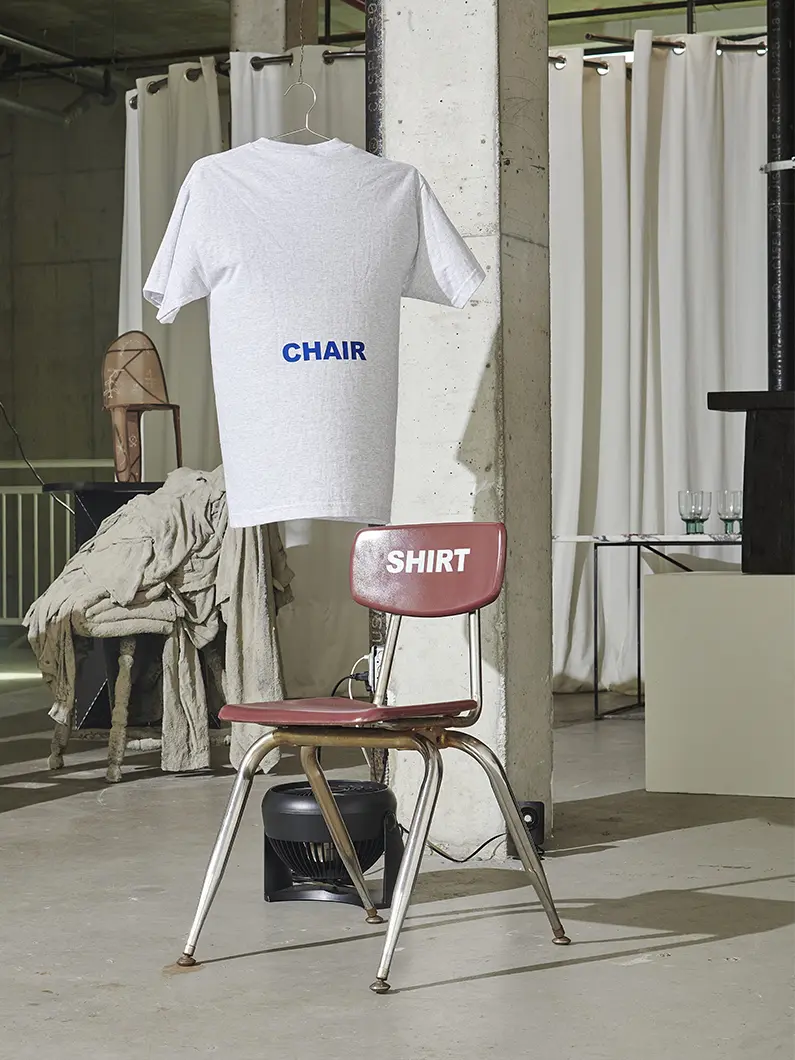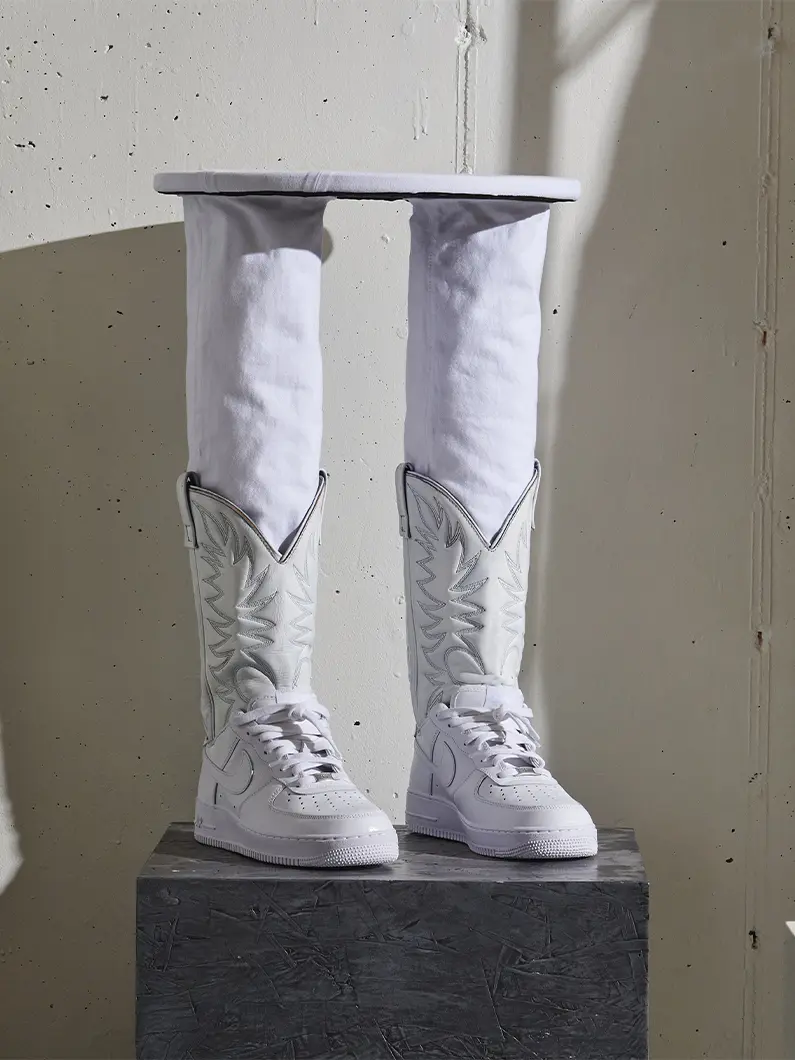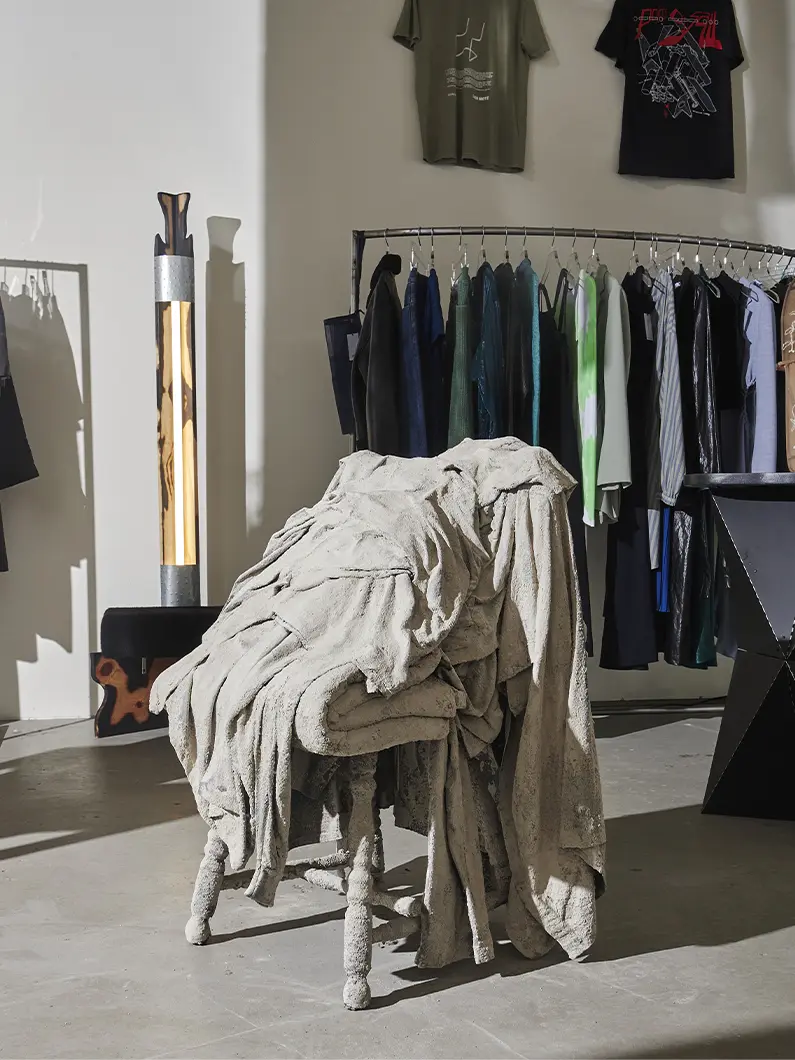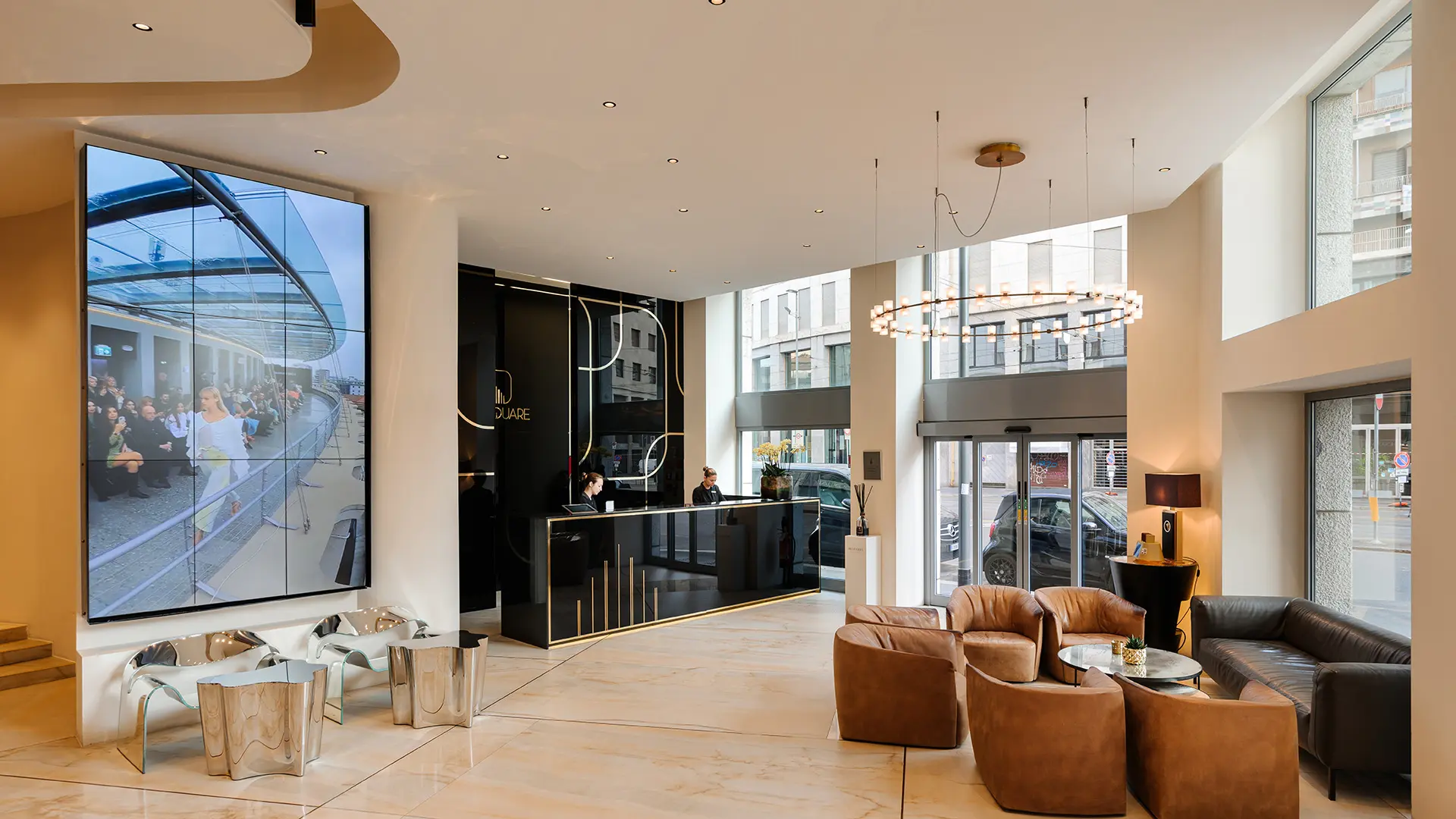In partnership with MiCodmc, a selection of establishments ripe for discovery during the 64th edition of the Salone del Mobile.Milano, from 21 to 26 April 2026
Pink Essay: the platform on the quest to democratize design
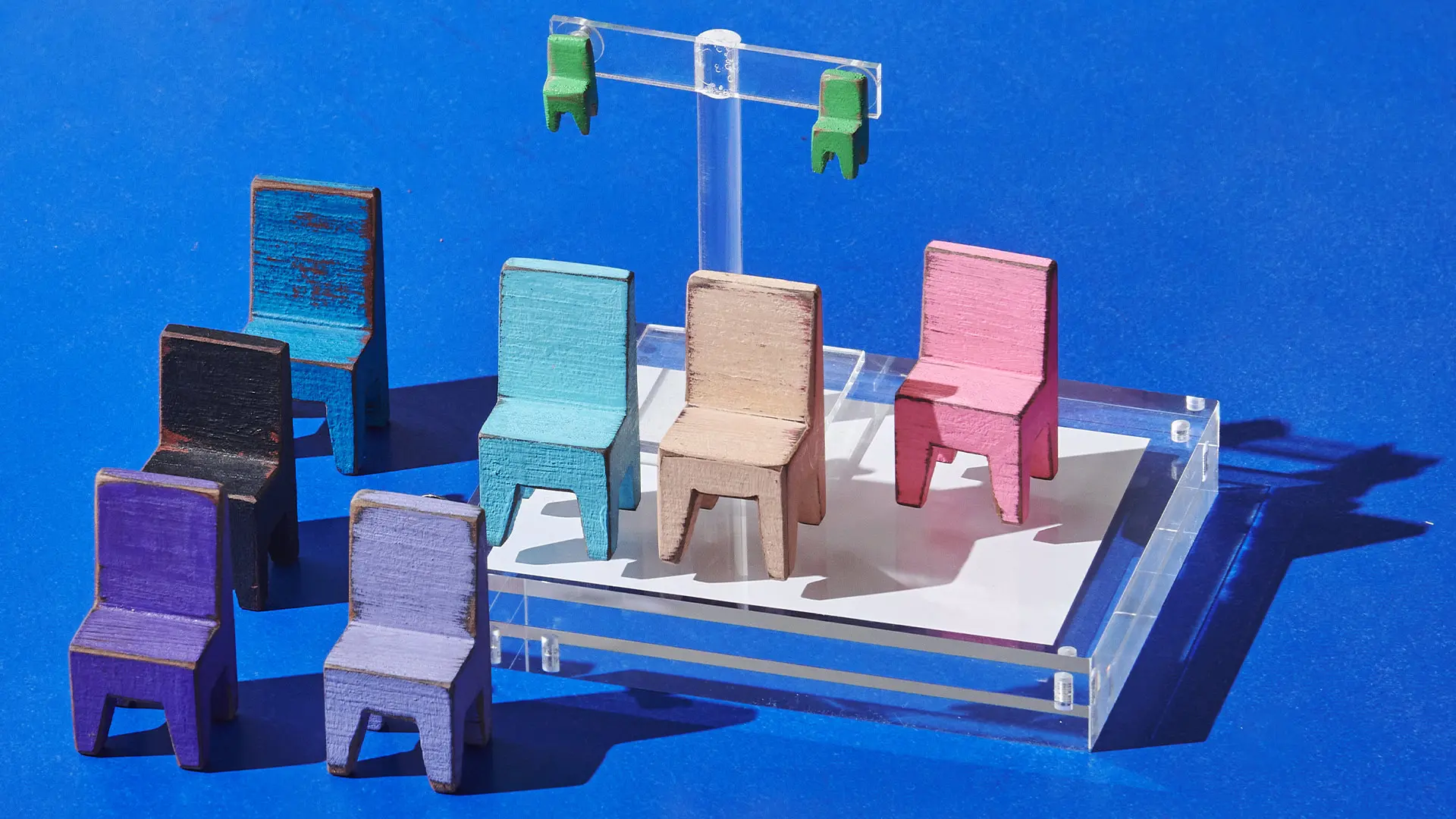
Wear Your Chair, work by Ellie Richards, photo Matthew Gordon
Like many examples of Millenial friendship, David Eardley and Matt Pecina met on Instagram in early 2020. As the world shut down and life took an unexpected digital turn, David’s platform Pink Essay became the catalyst for a design-fuelled bond that would eventually turn into an effortless business partnership
Originally launched by David Eardley – a former Montessori school teacher – as a newsletter in 2019, Pink Essay is not your average design blog highlighting the latest products by the usual world-renowned names.
The innovative platform doubles as a creative studio with the distinct goal to “re-design design culture” by giving students, young designers from marginalized communities and anyone with an interest for the furniture industry access to a space they would normally not be able to break into. During the pandemic, David was joined by Matt Pecina – founder of Studio Guapo – who took the role of Conceptual Director with the task to help the studio grow its experiential leg.
Based between New York and Mexico City, Pink Essay’s mission is transcendental. Online, their YK2 inspired website spotlights underrepresented talent through an editorial series called Design Heads. On Instagram, they provide a community of over 100 thousand followers with a platform to showcase their work. Offline, they gather people together by curating “free for all” exhibitions and events.
Both David and Matt have a particular obsession for chairs. According to them, it’s the most democratic and ubiquitous piece of furniture, “Everybody has a chair” they say. And it is exactly this primordial item that inspired their latest exhibition titled Wear Your Chair, currently on show at Nomia in East Williamsburg, New York until November 20th. We sat down with the creative duo to learn more about the concept and their work.
DE – Pink Essay started as an exploration of my own interest for design and furniture back when I was teaching children at a charter school in Brooklyn. During the pandemic, as I experimented with making lamps in my office, it flourished and I decided to dedicate myself to it full time. My goal was to create a community-oriented space where people could experience design in a less snooty way, both digitally and offline.
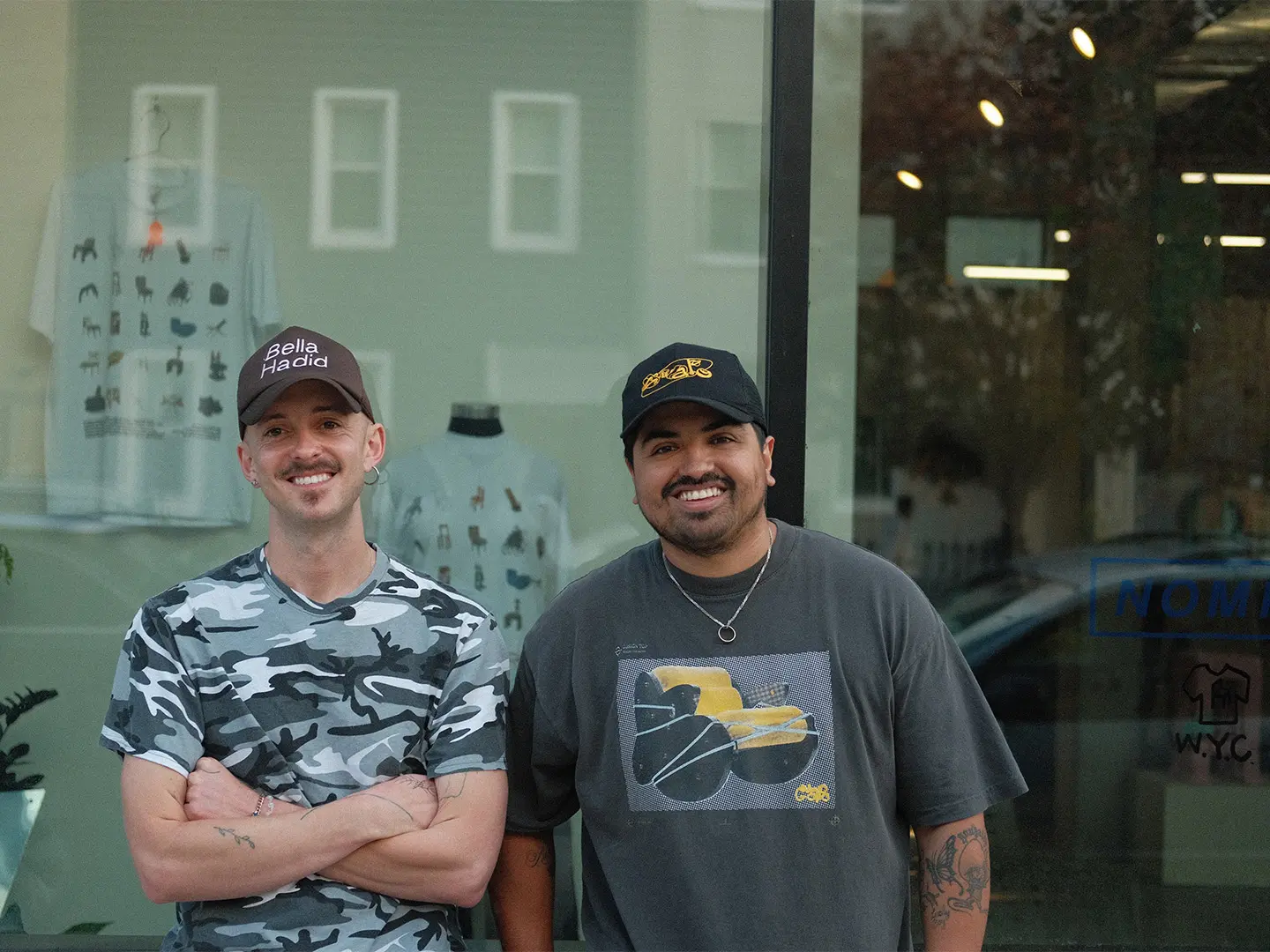
David Eardley and Matt Pecina, photo Volere Talleyrand
MP – I found out about Pink Essay from Instagram, you know, I was just following a bunch of design archive accounts. But at the very beginning of 2020, I had been working on this chair sculpture project in my studio documenting the whole process and, all of a sudden, I got displaced from my workspace because of the pandemic. So, looking for ways to show my work that didn’t require physical attendance, I decided to hit up Pink Essay and pay to have it published. That was my first experience with the platform, the same way people come to us all the time. From there, a ping-pong of communication started between me and David, he interviewed me for a video series he was doing during that period and we hit it off. It sort of naturally evolved from there.
DE – Well, this is the sixth exhibition that I curate personally. But it’s the first time that I feel the need to really care for the people in the show. I mean, I generally believe in treating people kindly of course, but in this particular instance I got the designers additional gifts. The concept, though, comes from Matt actually. It’s a term that he coined and then it became a series on our website.
MP – Coming from a streetwear background, or let’s say, a collector’s point of view, I began buying vintage t-shirts off Ebay and soon I noticed the biggest bulk of them all featured chairs as a graphic print. Eventually I accumulated a pretty big collection of this type of shirt and I realized it was time to get rid of some of them, so I decided to have a series of pop ups called “Wear Your Chair” at my studio and invite people to shop this collection back in 2020. I started to meet a lot of cool people who were interested in buying architecture-inspired tops, or that were already collecting them, so I created an Instagram account that archived all of them. It became a tool for expression, like “I can’t afford the chair but I am going to wear it on a t-shirt”. By talking to David about it, we figured out it would be a great project for Pink Essay to explore further.
DE – From a logistical standpoint, there are two things that I feel like are really important to mention. As we (Pink Essay) evolved over the past year, we have started to really think about our work and how our online series would live offline. And Wear Your Chair is part of that. It’s probably the first of many exhibitions. And the other thing is that it’s a sign of furniture as an increasingly powerful cultural influence. We think of furniture in such a mundane way usually that the fact that we can represent it this way, through a streetwear lens, brings a new value to it. It has collectability, it has hype. The success of this exhibition is a meter for the shift that’s happening between youth culture and design.

Wear Your Chair, Pink Essay, photo Matthew Gordon
DE – Our motto is “Re-design design culture” so in a sense, yes. We want to dismantle something that we deem archaic or too exclusive and make it better.
MP – It’s also a way to experiment with products that are yet to be engineered. For example, the t-shirt I have in the show features a chair design that I have not yet produced at scale. It’s a version of a product that I am aspiring to create but I haven’t had the opportunity to make because of whatever reason. It’s an upholstered version. By doing an edition of t-shirts with this print, it’s like I am speaking it into existence.
DE – It is very complex. So the theme of the show is Wear Your Chair and it was tackled from two different angles. From one side, there is a range of clothing in the form of a chair: a handbag shaped like a chair, jewelry and the screen printed t-shirt. On the other hand, we have a collection of furniture. Like a chair that is made as a coat rack. The theme was interpreted in a myriad of ways.
MP – We did an open call to our community to submit their chairs and then we did a curation of the submissions. We got over 300! A few were from our community already, and then more than half of them were from new designers that we had never seen. We went through all of them, a really diverse range, and picked what we felt like represents the internet the best and screen printed them on a t-shirt to make a timeless grail.
DE – The shirts feature the work of designers from outside of New York because we wanted it to be as varied as possible. For the actual artwork on show it was mostly designers from New York because of the logistics of moving the furniture around.
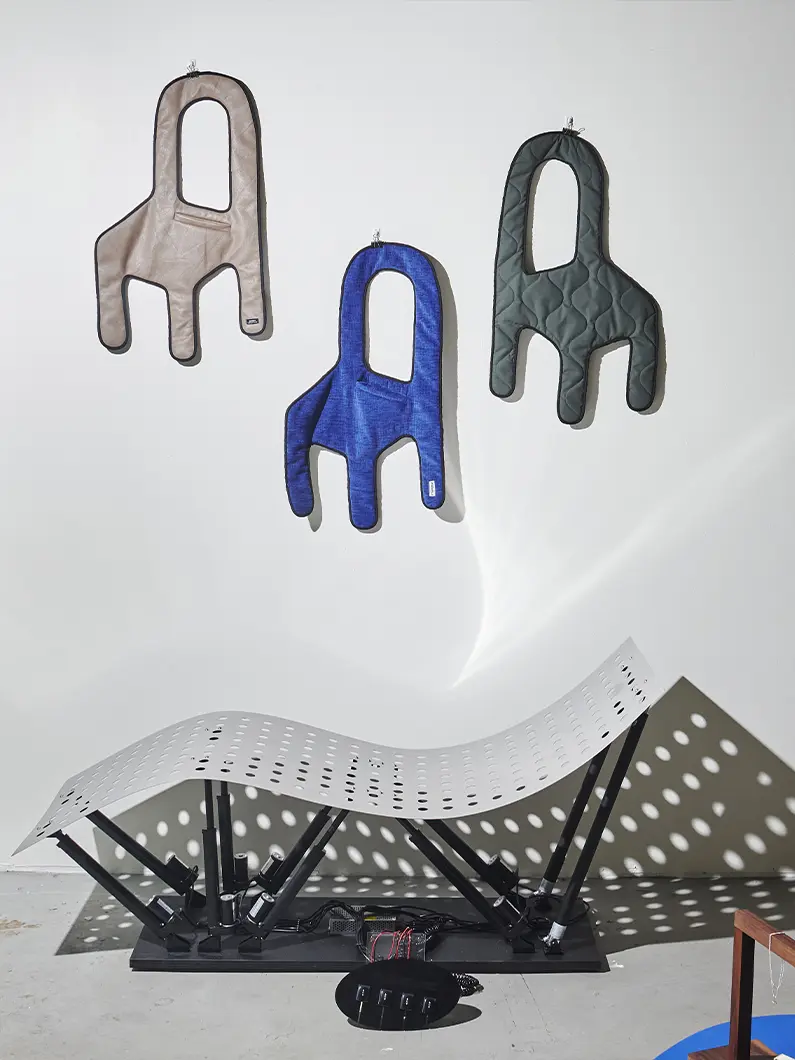
Work by Drew Seskunas and Nathaly Delacruz, photo Matthew Gordon
MP – I think there is a lot more optimism and excitement. I have seen people that were making something casually in their garage began really diving into work since being platformed by Pink Essay. I think that, when you feel like you have a community, it motivates you to go harder and you feel the validation. Especially as an artist, it’s hard to make things if you don’t feel like it doesn’t resonate.
DE – You make a really good point Matt. I think in general the creative industry has gotten a lot more community oriented. Our generation, at least, is working towards that, to open the art and design world, two industries characterized by their exclusivity, up. My perception is that there’s less emphasis on competition and it’s more like “Let’s make cool stuff together”.
MP – I think the “online” part of the project will grow into a periodical collection of t-shirts that will drop every six months or so, to give different designers the opportunity to be part of it. We want to be remembered as the design collective who imprinted chairs on t-shirts and make it become an iconic thing.
DE – As I said earlier, this is the first of many exhibitions. Hopefully we will bring this to Los Angeles, Mexico City and who knows where early next year. For Pink Essay, we are going to continue working towards our mission to platform underrepresented designers and design aficionados, curate more exhibitions and do whatever is needed to make design more accessible for all.

A Matter of Salone: the new Salone communication campaign
From a reflection on humans to matter as meaning: the new Salone communication campaign explores the physical and symbolic origins of design, a visual narration made up of different perspectives, united by a common idea of transformation and genesis



 Stories
Stories
